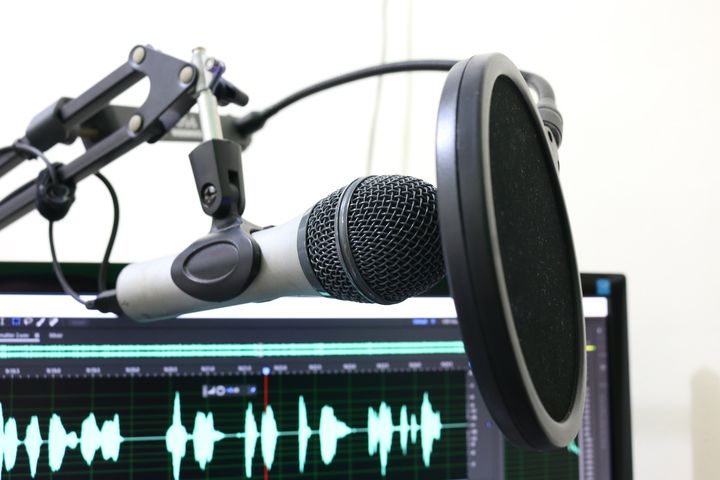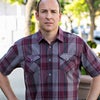
Nerves made my voice shake, and I had to re-record the intro four times. It was the first episode of the Cognipop® podcast way back in April 2016. I wasn’t sure how it would sound, who would listen, or whether it would be successful, but I did know one thing for certain: I was going for it. For a time, my podcast ranked higher than those from business titans Gary Vaynerchuk, James Altucher, and Seth Godin, which was amazing in and of itself. Tens of thousands of listens later, I’m glad I did it.
Podcasting is a perfect way to market “you.” It lives online 24/7 and can be targeted and re-targeted many different ways. It enables you to find your voice, hone your message, and market for free. It can also help establish your expertise. The startup investment is relatively low, and you set the timetable and the topics. When done correctly, a podcast becomes a living marketing machine, attracting people to you and your brand for as long as you allow it.
Despite the simplicity, most people never start a podcast because it seems overwhelming. Here are the six essentials of a successful first podcast:
Set Up Your Template
Most of what you’ll hear (or read) out there is about picking your topic. The problem with picking your topic is that it’s too vague and won’t really help you get started. A topic like “football” or “politics” or “business” doesn’t tell you how you’re going to approach the subject or why your audience will care. A template, on the other hand, sets it all up for you: what you will talk about, how you’re going to talk about it, and why it’s important for your market.
Let’s say you want to talk about business. What about it? Do you want to teach business concepts or critique management styles? Want to interview business leaders or do all the talking yourself? Do you believe your target market will get more value from concepts or tools? As you ask yourself all these questions, you’ll see three things emerge: what you want to talk about (topic), how you want to talk about it (approach), and why your market will benefit from your podcast (value). That template is the first step you should take, so be sure to cover the topic, approach, and value.
Decide on You v. Interviews
I break this out as a separate item from your template because your decision on “you versus interviews” will dictate a lot about how you do your podcast. If it’s just you, you don’t need much and literally every moving part is within your control. There were times when I would plan, record, edit, and publish podcast episodes in the space of a couple hours. If you choose to do interviews, however, you will need to select and schedule people weeks (or months) in advance, you will block out more time on your schedule and spend a lot more time editing, and you will need to hone your interview skills. I decided on my voice from day one. I didn’t want the hassle of scheduling guests, I wanted to build my own authority, and I wanted to get started quickly. For me, it was a winning choice.
Get Your Equipment
The Cognipop® podcast has helped me generate tons of new business and all I really needed was a laptop, earbuds, and editing software. When I initially started researching what it would take to launch my first podcast, I read a bunch of articles discussing high-end mics, preamps, editing software, and other podcasting necessities. I also saw pictures of podcasters like Lewis Howes and Pat Flynn in front of fancy gear. I bought a lot of these items, but then got frustrated trying to learn the new software and figuring out how to integrate some of the components I purchased. In fact, I almost gave up.
Editing
I remember struggling to edit an episode and deciding to export it into Audacity, a free editing tool available for Macs. I was already familiar with Audacity, and realized I could capture and edit my podcast episodes directly into the app. From that day forward, every single episode of the Cognipop podcast was captured and edited on Audacity. It’s the easiest thing you can use and if you have a PC, there are similar free applications. It took me 10 minutes to learn how to use Audacity and I probably used less than four functions each time. Once you’re experienced and comfortable, you can always upgrade your software. To start quickly, though, go basic.
Mic
You can use your standard phone earbuds. I’ve used those for many of my episodes, and the quality is more than sufficient for a podcast. However, since I had a Blue Yeti mic with a USB interface, I enjoyed the flexibility it allowed. Just keep in mind that earbuds don’t require any additional tools. A mic, on the other hand, might require a stand, a shock mount, an interface, or other items. Before you know it, you can easily spend hundreds in unnecessary equipment. If you want to get started immediately, start with your earbuds.
Host It
I’ve had my site, brockshinen.com, hosted on the Rainmaker platform for a few years now. Podcast hosting is included in my package and I have detailed analytics, so I’m happy with it. I’ve found that many other podcasters are using Libsyn or PodBean, but you can find plenty of low-cost alternatives. If you’re not sure where to start, Google search, “Podcast hosting,” and you’ll find all the answers you need. The most important considerations are going to be the ability to scale, price and analytics, but don’t get caught up in the choices. Select one and run with it.
Publish Your Podcast
What’s the point of a podcast without it being available to the public? At a bare minimum, you want it on iTunes. Stitcher, Google Play, and SoundCloud are also important. There are sites listing hundreds of platforms, but keep in mind that the vast majority of podcast listeners are going for the ones listed above. If you go with a service like Libsyn, the connection is easy and there are tutorials and other information to quickly guide you. If you’re trying to figure it out on your own, each platform has specific instructions. iTunes, for example, shows you exactly how to connect your podcast.
Promote and Go
Volumes could be written on best practices for podcast marketing, but it all starts with sharing on your own social media accounts. Tell people what you are doing and why, then make it easy for them to connect. Don’t cram it down anyone’s throat – just tell stories and weave your podcast episodes into your stories. That’s the quickest and best way to start.
This article is intended to highlight the simplest ways to get started because that’s what many people want to do. However, podcasting is a powerful tool, so if you want to take it serious, invest in setting it up for the long term. In my strategy sessions, I work with entrepreneurs, business owners, leaders, and creatives, helping them flesh out what it takes to launch a successful podcast. Reach out if you want to learn more about that.
